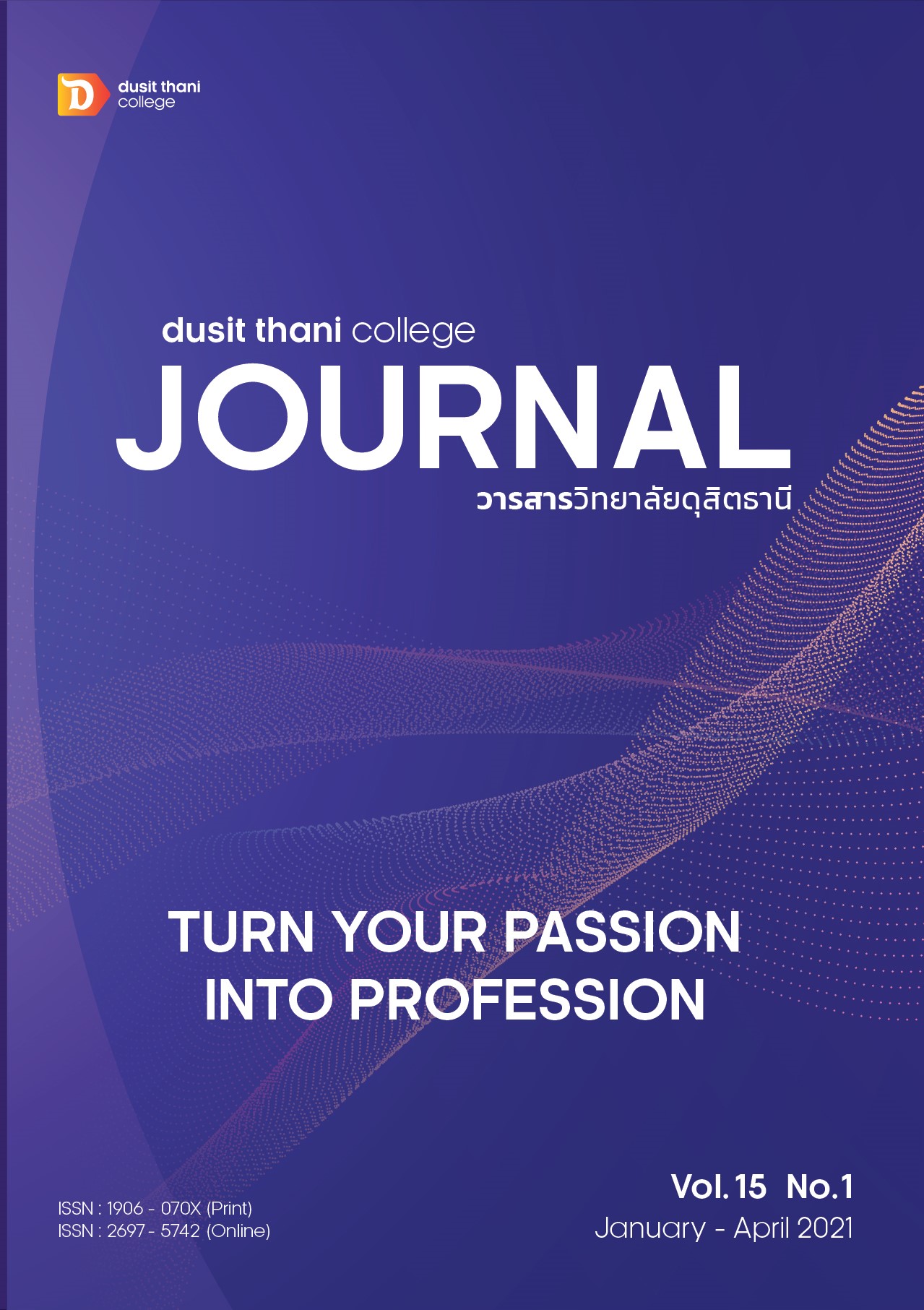THE CORPORATE MEETING PACKAGE DESIGN WITH CONJOINT ANALYSIS FOR COMPETITIVE ADVANTAGE DEVELOPMENT IN NAKHON PATHOM PROVINCE
Main Article Content
Abstract
This research aimed 1) to study the attributes and the attributes level of the corporate meeting package components 2) to analyse the components of a corporate meeting package that is consistent with the needs of corporate meeting travellers’ groups in Nakhon Pathom province, and 3) to group the corporate meeting traveller and comparative study the difference in each subgroup in Nakhon Pathom province. It was used a mixed-methods research by in-depth interviews with 40 business stakeholders in Nakhon Pathom Province to extract 5 attributes and 14 attribute levels. Then, the questionnaires were generated and used to collect data with a sampling group of 390 users of the meeting venue in Nakhon Pathom province with using Content Analysis, Conjoint Analysis and Cluster Analysis. The research revealed that 1) There were 5 components of meeting package attributes; meeting room, price, food and beverage service, environment of organizing activities, and linkage tourist attractions. 2) The research finding that the most important component was the meeting rooms that had a weight of 24.684. The linkage tourist attractions had a weight of 21.130. The price component had a weight of 20.725. The food and beverage service had a weight of 18.958. The environmental meeting had a weight of 14.503, respectively. 3) The result of Cluster Analysis revealed that the most of the hotel and convention users focused on the meeting rooms and linkage tourist attractions, highly significantly and most resort users focused on the meeting rooms and price, highly significantly.
Article Details
Article Screening Policy
- All research and academic articles to be published must be considered and screened by three peer reviews in the relevant field / article.
- All articles, texts, illustrations and tables published in the journal are the personal opinions of the authors. Editors don't always have to agree. And no responsibility whatsoever is the sole responsibility of the author.
- The articles to be published must never be published. Where did you first publish? And not in the consideration of other journals If the audit found that there has been a duplicate publication It is the sole responsibility of the author.
- Any article that the reader sees as being plagiarized or impersonated without reference. Or mislead the work of the author Please let the journal editor know it will be your greatest blessing.
References
in Amari Group. The Journal of Development Administration Research. 5
(January-June), 51-62. (in Thai)
Choi, J. J, and Boger, C. A. (2000). Association Planers’ s satisfaction: An application of importance-performance analysis. Journal of Convention & Exhibition Management. 2 (2-3), 113-129.
Cro, S, and Martin, A. M. (2018). International association meetings: Importance of
destination attributes. Journal of Vacation Marketing. 24 (3), 218-233.
Cochran, W.G. Sampling Techniques. (1977). 3rd edition. New York: John Wiley & Sons.
Deokhyun Jo and Others. (2019). Destination-selection attributes for international
association meetings: A mixed methods study. Journal of Destination Marketing
& Management. 13 (2019), 61-72.
Goldblatt, J. Special Events: Best Practices in Modern Event Management. (1997). 2nd
edition. New York: Van Nostrand Reinhold.
IAPCO. (2011). “IAPCO survey press release”. IAPCO Survey Press Release. 5 (2011), 1-4.
Jampajee, S. (2013). International Academic Conference Marketing Mix Development
in Khon Kaen Province. An Independent Study of Master Degree. Faculty of
Management Science, Khon Kaen University. (in Thai)
KaewjitKhongthong, P., & ChawBanpho, Y. (2016). Factors affecting the selection service of
MICE for Hotels and Resorts in Kanchanaburi Province. Western University
Research Journal of Humanities and Social Science. 2(3), 35-46. (in Thai)
Lancaster, K. J. (1966). A New Approach to Consumer Theory. Journal of Political
Economy 74 (1996), 132-157.
Lichy, J., & Mcleay, F. (2018). Bleisure: Motivations and Typologies. Journal of Travel &
Tourism Marketing. 35 (4), 517-530.
Lee, J. S., & Min, C. K. (2013). Examining the role of multidimensional value in convention
attendee behavior. Journal of Hospitality & Tourism Research, 37(3), 402-425.
Leksuma , P. (2020). The Guidelines for the Potential Development of Meeting Venue
Business In Nakhon Pathom Province. Faculty of Humanities and Social Science.
Rajabhat Nakhon Pathom University. (in Thai)
Moon et al. (2011). A Real-Time Booth Recommendation Based on Partial Path Information. International Conference on Social Science and Humanity, 5 (2011), 285-289.
Mohammad Enamul Hoque. (2016). MICE Destinations Branding from Corporate Branding
Perspective. Social and Behavior Science. 210 (2016), 307-315.
Nelson, R., & Rys, S. (2000). Convention site selection criteria relevant to secondary convention destinations. Journal of Convention & Exhibition Management, 2 (2- 3), 71-82.
Pankaew, S. Human Resource Management in Hotel Industry. (2015). Bangkok:
Chulalonkorn University Press. (in Thai)
Soyoung Boo & James A. Busser (2019). Meeting planners’ online reviews of destination
hotels: A twofold content analysis approach. Tourism Management 66 (2019), 287-301.
Srisompong, P. (2015). The Potential Factors of Meetings, Incentives, Conferencing,
Exhibitions Business (MICE) in Phayao Province for ASEAN Economic Community
Preparations. Research and Development Journal Suan Sunandha Rajabhat
University, 7(2), 45-56. (in Thai)
Thailand convention & Exhibition Bureau. Thailand MICE Venue Standard Certification
Handbook (Category: Meeting Room). (2016). Bangkok: Thailand convention &
Exhibition Bureau. (in Thai)
Thailand Convention & Exhibition Bureau. (2020). MICE Static (ออนไลน์) .สืบค้นเมื่อ 2
กรกฎาคม 2563, จาก https://intelligence.businesseventsthailand.com/en/page/mice-
statistics.


